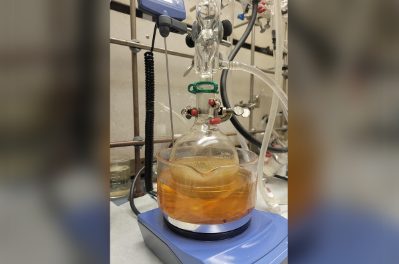Leading a research team that recently received a grant from the US Department of Energy, Michele Galizia, a President’s Associates Presidential Professor in the School of Sustainable Chemical, Biological, and Materials Engineering at the University of Oklahoma, will create better polymer membranes to help with molecular separation and related materials science.
 Researchers fabricate polymers for use in this project. Image Credit: The University of Oklahoma
Researchers fabricate polymers for use in this project. Image Credit: The University of Oklahoma
We currently separate chemicals, gases, and liquids using a thermal-based distillation technology that is very expensive to operate and consumes the equivalent of eight GJ of electricity per person on the planet per year. So, our goal is to develop next-generation devices for large-scale gas separation using polymer membranes instead of distillation. These membranes must exhibit adequate long-term stability of at least three years if we want to make these processes feasible and profitable.
Michele Galizia, President’s Associates Presidential Professor, School of Sustainable Chemical, Biological and Materials Engineering, University of Oklahoma
Galizia collaborates with Marco Buongiorno Nardelli at the University of North Texas and Alberto Striolo at the School of Sustainable Chemical, Biological, and Materials Engineering. Together, they concentrate on fundamental research, drawing inspiration from different domains and using chemistry and physics theories to create superior materials.
Galizia added, “Our team is leveraging molecular simulations to select the monomers needed to make new polymer membranes. These new membranes would use 1,000 times less energy to separate mixtures than it would take to distill it.”
This membrane technology could find applications in a variety of industries, including healthcare, aviation, fossil fuels, and more if the researchers are successful.
“There really is a variety of separations that we could run. These include carbon dioxide separation from natural gas, olefine-paraffin separations, hydrogen separation and recovery, solvent separation and many others. We just need more selective and durable membranes, which is exactly what we want to do in this project,” Galizia stated.
This interdisciplinary initiative offers a chance to train future materials scientists in addition to being in line with the University of Oklahoma’s strategic plan.
Galizia concluded, “Our job is to educate the next generation workforce and the leaders of the future. That is why we are doing this.”